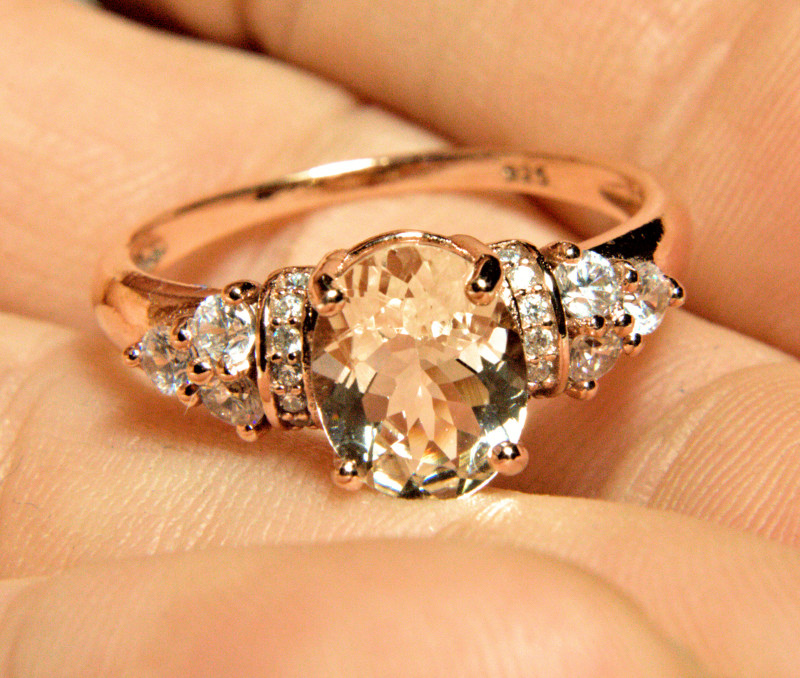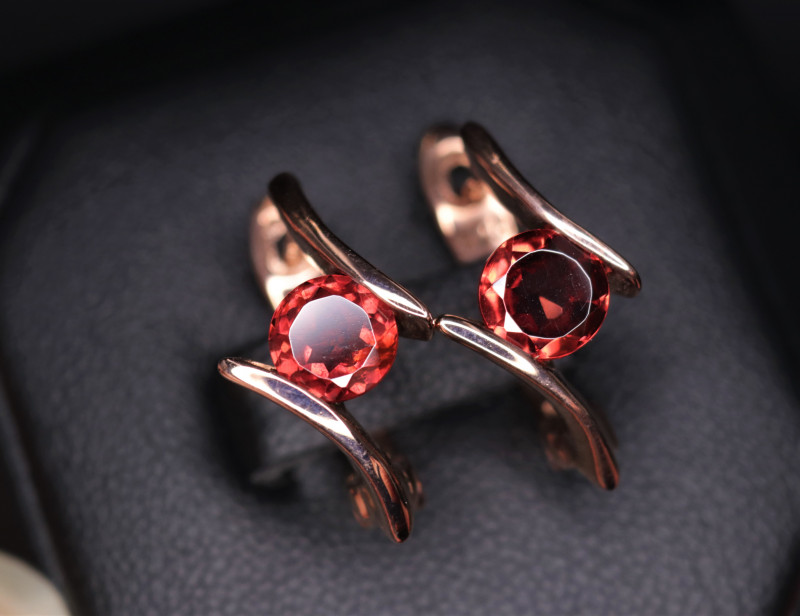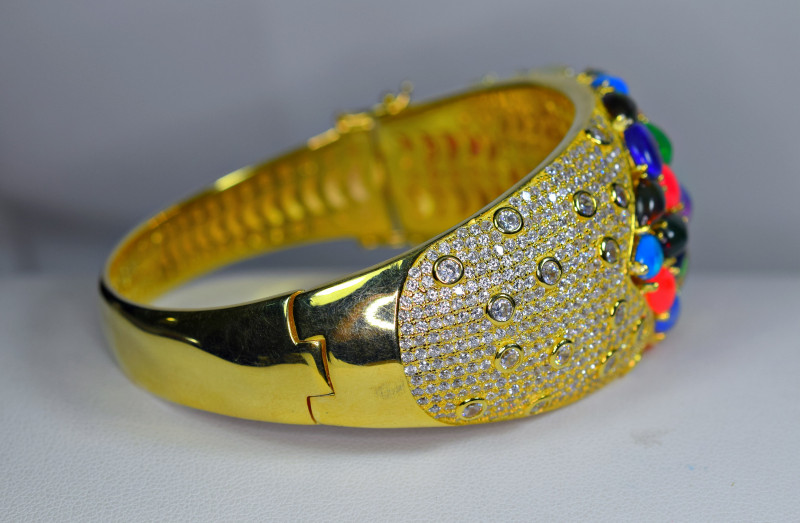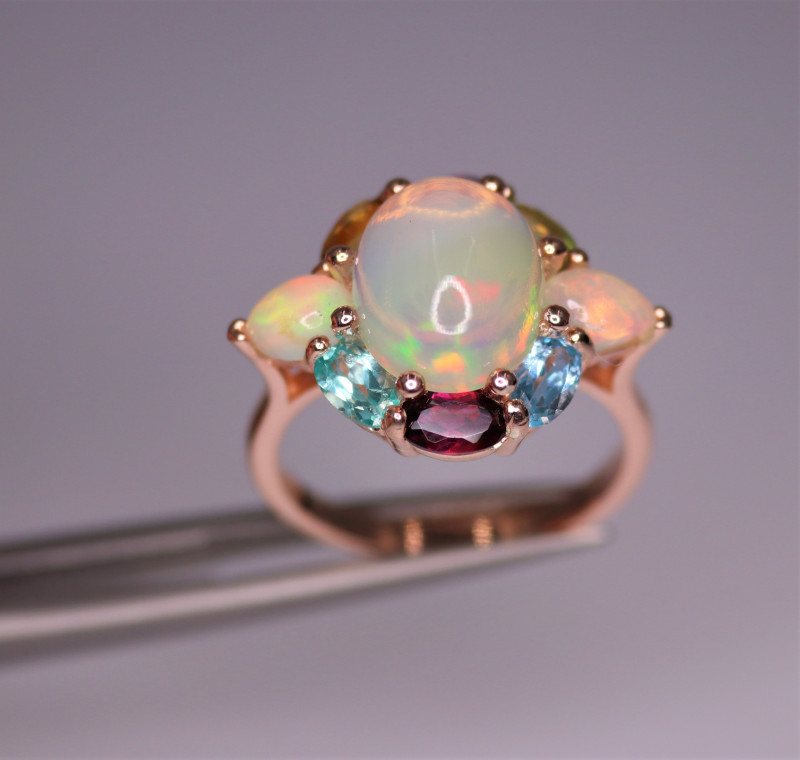
925 金首饰印记代表什么意思?
 如果您只是一名普通珠宝买家,您可能见过印有“925”字样的银饰或金饰,并对此感到困惑。这是珠宝商之间的某种秘密代码吗?不,其实比这更简单,但 925 印记的含义取决于我们谈论的是哪种珠宝。
如果您只是一名普通珠宝买家,您可能见过印有“925”字样的银饰或金饰,并对此感到困惑。这是珠宝商之间的某种秘密代码吗?不,其实比这更简单,但 925 印记的含义取决于我们谈论的是哪种珠宝。
大部分时候,你会在银饰上看到 925 标记。但金饰上的 925 标记代表什么呢?
今天,我们将回答这个问题,讨论黄金首饰上的 925 标记、925 黄金的价值、需要熟悉的其他标记以及购买任何类型的黄金首饰之前需要了解的知识。

什么是 925 金?
珠宝上的 925 印记或任何其他印记都称为“标志”。标志的其他术语包括“纯度标记”或“质量标记”。
大多数珠宝标记都表明了所用贵金属的类型和纯度。主要的四种贵金属是银、金、铂和钯。
珠宝中的 925 代码是什么?珠宝标记中的数字“925”是 92.5% 的简写。
您可能已经知道与纯银相关的 925 标记。纯银上的 925 标记反映了其成分,因此也反映了银的纯度:92.5% 的银和 7.5% 的合金,通常是铜。
这是否意味着 925 金的含金量为 92.5%?不是,但这是一个常见的误解。不过,它确实与纯银有关。
925 是仅用于纯银的标志。
925 可以镀金吗?可以!事实上,这几乎就是 925 金的定义。
带有 925 标记的黄金首饰在纯银底座上覆盖一层金,这种技术称为镀金。纯银底座上的镀金首饰通常被归类为镀金银饰。
镀金银(如果您感兴趣的话,发音为ver-may )比典型的镀金更优质、更有价值。根据大多数国家的规定,金层厚度必须至少为 0.5 微米。这种款式有时被称为“镀银”。
其他类型的镀金首饰使用黄铜或铜等低质量的贱金属。此外,大多数法规要求镀金层厚度至少为 2.5 微米,纯度为 10K(约 42% 的黄金)或更高,才能归类为镀金首饰。
纯金与925金
重要的一点是, 925 金不是纯金,而是镀金纯银。
这意味着 925 金首饰的价值远低于纯金首饰。如果您专门寻找纯金首饰,请不要购买带有 925 标记的首饰。
银饰和金饰都有纯度等级和标记。但银饰是按照等级系统来评定的,而金饰则是按照纯度(称为克拉数)来评定的。

黄金首饰上的印记含义
黄金首饰有许多自己的标志。您最常看到的是指示黄金纯度的标志,以克拉为单位。
1 克拉相当于 24 份黄金中 1 份纯金,以比率表示。因此,24 克拉 (24K) 黄金是 100% 的黄金。而 14K 黄金是 14 份黄金和 10 份其他金属,因此其纯金含量为 58.3%(将 14 除以 24 后转换为百分比)。
下面,我们列出了您会在黄金首饰上看到的表示克拉的流行标志。
黄金克拉标记和纯度:
24K = 999/99.9%
22K = 917/91.7%
20K = 833 / 83.3%
18K = 750/75%
14K = 583/58.3%
10K = 417/41.7%
黄金首饰上的标记可追溯到公元 1200 年。与当时一样,黄金上的纯度标记是一种保护消费者的方式,可确保对物品进行测试和验证,以确定其成分中贵金属的真实含量。
维也纳体系始于 20 世纪 70 年代,加入该体系的国家使用通用中央标记 (CCM),这表明黄金经过了更严格的质量测试。如果您看到带有天平符号的黄金克拉数标记,那就是 CCM。
生产印章
黄金首饰所采用的工艺也常常以标记来表示,例如:
GP 或 GEP :镀金或电镀金 — 两者含义相同
RGP :压延金板——金层比包金薄,但比镀金厚
HGP 或 HGE :厚金板或厚金电镀 — 通过电镀镀金,但厚度超过 1 微米
GF 或 1/20 : 包金——更厚、更耐用的金层,覆盖在基底金属上,整体由至少 5%(1/20)的纯金组成
上述每个标记后面通常都标有克拉数(例如 GP 18K)。
 上图:意大利珠宝品牌 Dirce Repossi 的珠宝标志 | 图片来源:Mwsa94,知识共享署名-相同方式共享 4.0 国际许可
上图:意大利珠宝品牌 Dirce Repossi 的珠宝标志 | 图片来源:Mwsa94,知识共享署名-相同方式共享 4.0 国际许可
其他可能的标志
您可能看到的另一种与纯度无关的标记是赞助商标记。这通常是形状内的首字母缩写,表示是谁送来标记的,可能是公司、制造商或独立金匠。
要获得赞助商的标记,就必须在检验机构注册,检验机构负责检测金属纯度,类似于认证钻石品质的实验室。
检验机构也会留下自己的标记。例如,侧锚标记是伯明翰检验机构的标记,表示特定机构测试并验证了该珠宝的纯度。
您还可能看到一个印章,以字母形式表示珠宝的年份。字母按字母顺序排列,从 1998 年开始为a 。例如,2011 年为m ,2012 年为n , 2013 年为o ,等等。
也有传统和纪念性标记,但这些不太常见。
各国对珠宝标记要求的规定各不相同。许多国家都要求标记,但中国、印度和意大利等地则自愿标记。
关于意大利的话题……
黄金上的“925 Italy”代表什么意思?
您可能在黄金上看到的另一个 925 标志是“925 意大利”或“意大利 925”。
金饰上的 925 Italy 标记表示该饰品产自意大利,由镀金的纯银制成。带有 925 Italy 标记的银饰表示其银含量为 92.5%(纯银),产自意大利。

所有的黄金首饰都有印记吗?
并非所有黄金首饰都有标记。虽然没有任何标记可能表明首饰中没有真金,但情况并非总是如此。
并非每个国家都有法律规范黄金首饰标记;即使是像美国这样有这些法律的国家,珠宝也可能是在法律通过之前制造的。
说到旧物件,印记也会随着时间而磨损。对于金戒指等物品来说尤其如此,因为它们经常与皮肤密切接触,并且更有可能接触其他物质(其位置在手上)。
如果没有任何印章,我如何辨别珠宝是否是真金?
如果您发现没有印章的金饰,最好让珠宝商测试一下。通过酸性测试,珠宝商可以确定黄金的克拉数或判断该珠宝是否镀金。
了解了所有术语和细节后,现在该集中精力购买 925 金首饰了。

925 金的价值
标有 925 的黄金有价值吗?当然有。黄金永远不会一文不值,尽管标有 925 的镀金首饰的价值会比纯金低得多。
925 黄金的克拉数是多少?每件首饰的克拉数都不同。正如我们讨论过的,“925”并不反映克拉数,因此印有 925 字样的黄金首饰可以是 10K 金、24K 金或介于两者之间的任何克拉数。
925 金可以典当吗?是的,925 金可以典当,但您获得的收益远不及纯金。不过,您获得的收益会比用更便宜的贱金属制成的镀金首饰多。
镀金的克拉数、金饰的整体重量、品牌和黄金的当前价值也会影响其价值。
目前不同类型的 925 金首饰(不含宝石等附加元素)的平均价格如下:
项链:7 至 50 美元
手镯:10 至 70 美元
戒指:10 至 100 美元
耳环:13 至 70 美元
如果您刚刚购买了一些 925 金,您一定想知道它能持续多久,对吗?
925 金会褪色吗?
对于黄金首饰来说,影响其寿命的因素包括失去光泽和褪色。
失去光泽是指金属与水分和硫发生反应,通常是氧化,形成腐蚀的表面层。这会导致颜色和/或光泽变暗。褪色是一个更笼统的术语,指的是亮度、强度或颜色的损失,因此失去光泽可以算作褪色的一种。
纯金以永不失去光泽而闻名,但 925 金是镀金的,失去光泽是不可避免的。因此,925 金首饰会随着时间的推移而褪色。
因为几乎所有 925 黄金首饰都是镀金的,只要保养得当,使用寿命可达 20 年或更长时间。如果您打算转售黄金首饰,保养至关重要。

925 金是您心目中十全十美的黄金吗?
一些纯粹主义者可能只寻找纯金,但纯金也有缺点,例如耐用性较低,不适合日常佩戴,而且价格昂贵。
925 黄金为那些想要投资纯银和黄金的人提供了两全其美的选择。对于普通的黄金首饰爱好者来说,925 黄金是一种更实惠但仍然精致的纯金替代品。
准备购物?浏览我们的黄金首饰系列!
搜索Fashion Encyclopedia






